I watched the entirety of the October 4 debate between the vice-presidential candidates, Tim Kaine and Mike Pence — live. No distinctive visual image emerged (save for the exception noted below). With the sound off, it just looks like two middle-aged white guys talking across a desk, one more animated than the other.
With the sound on, Kaine became annoying with his first interruption, just a minute or so into the event, and remained that way throughout. By five or so minutes in they were both not only talking over each other but riding roughshod over moderator Elaine Quijano. As a viewer, I found the whole thing off-putting, save for the fact that Pence — for all his unruffled demeanor and the-adult-in-the-room attitude — either lied forthrightly about everything Kaine quoted from Donald Trump or weaseled out of supporting any of Trump’s positions.
From the subsequent evidence, that was the point of Kaine’s performance, a trident in fact: to get Pence on record denying things that the record proves Trump said; to get him tacitly refusing to commit himself to any of Trump’s policies and ideas (if I can thus dignify The Donald’s utterances); and to get him visibly positioning himself for a 2020 run at the White House himself, even at the cost of throwing his running mate to the wolves.
If Clinton and Kaine set out to achieve those goals, then Kaine did a fine job, even sacrificing some of his heretofore homespun nice-guy appeal to do so.
My least favorite moments came at the end, when both men found their only common ground by trotting out their faiths. I realize that smarmy religiosity is now de rigeur in such situations, but this really got icky.
If you want to watch the whole thing, you can find it here. And you can read the full transcript here.
The strongest visual image, for me, appeared before the candidates came onstage. Having tuned in a minute or two early, I heard Quijano, off-screen, introduce herself and remind the audience of the rules governing their attendance — silence, etc. Then she walked onstage and sat down at the desk in a high-backed chair, so that we saw only the back of her head. She fiddled with her papers. She adjusted the straw in her glass of water. Then she waited. As did we. And waited. And waited, as the clock ticked for several minutes past the official starting time of 9 p.m.
Finally the candidates got themselves ready, Quijano read the rules of engagement, called for a round of applause, the two veep prospects came out, and the mildly wild rumpus began. But what stays with me is that endless few minutes just before, because Quijano became faceless then and remained so throughout.
Grabbing Them by the Tic Tacs
Of course, this was three days before the Washington Post published the devastating September 2005 tape of The Donald and celebrity bootlicker Billy Bush exchanging “locker room banter” about women. Bush — cousin of Dubya — got promoted last May to the position of host at NBC’s “Today” show, from which he has now begun to negotiate termination as a consequence of his role in that video. (Check out Samantha Bee’s take on this. And see Stephen Collinson’s October 8 CNN report, “Can Donald Trump recover from this?” — which includes a video of the apology.)
This came out just two days before the second presidential debate (scheduled for Sunday, October 9), immediately dominating the news cycles. It threatens to undermine Trump’s already failing and flailing campaign, to such an extent that it forced him to do publicly something he has never (to my knowledge) done before: Apologize. Sort of. Or not really. Or not.
Specifically, he said this: “Anyone who knows me knows these words don’t reflect who I am,” he said. “I said it. I was wrong. And I apologize.” With this he joins the ranks of those weasels who assert that some of their verifiable words and/or deeds do not constitute manifestations of their character. True to form, Trump embedded that in a tirade he posted to his Facebook page wherein he termed this revelatory evidence of his character nothing more than “a distraction.” Still, the very fact that he uttered the words “I apologize” made this a historic moment, and generated an historic image.
As a result of that video’s release and his responses thereto, numerous GOP figures quickly withdrew their endorsements and other support for him; a number of them called on him to leave the race and let Pence take over. Not only that, Trump faced the ultimate humiliation: disaffiliation by a company that makes breath fresheners. (See “Tic Tac denounces Donald Trump.”)
Bad enough to alienate high-profile rock stars by co-opting their songs as campaign anthems without permission. When an aspiring political dynasty gets on the wrong side of beloved candy-makers — first Skittles, now Tic Tac — they’re well on their way down a slippery slope.
The Main Event (Round Two)
I would take much more pleasure in watching the runaway train that is the Donald Trump campaign if I could shed the lurking fear that it still could actually crash through the gates of the White House or, barring that, touch off some alt-right insurrectionary bloodletting.
(That image of the runaway train led me to recall one of my favorite underrecognized action films, 1985’s Runaway Train, directed by Andrei Konchalovsky and starring Jon Voight, Eric Roberts, Rebecca De Mornay and John P. Ryan. It’s a prison break-revenge thriller, based on an original screenplay by Akira Kurosawa, about a real and implacable underdog with genuine grievances. Though it features Trump apologist Voight, this movie’s plot has absolutely nothing in common with the orange-faced princeling’s scrambling for enthronement and claims of disenfranchisement. So the contrast is telling. You’ll find some scenes, like this one, on YouTube, but I recommend watching the whole thing. Not for the faint of heart, I hasten to add.)
Anyhow, I’m pleased to report that the second presidential debate, held in St. Louis on the night of October 9, did much to quell my anxiety over the possibility of a Trump victory next month. The optics, as they say, were not good for The Donald. Before an estimated 59 million viewers, Trump once again proved himself unable to stay on-topic and answer directly the questions he’s asked, to address actual facts, to take responsibility for his own words and deeds, to display anything remotely resembling a statesmanlike demeanor, to restrain his compulsion to brag and bully, or to tell the truth.
In short, he had — or, more precisely, continued to have — a massive public implosion. See Brian Beutler’s analysis, “Donald Trump’s Meltdown Is Nearly Complete,” in The New Republic, for a thorough analysis.
Beutler refers in passing to the psychological condition called codependency as an explanation of “the loyalty of [Trump’s] core supporters,” referring to his base in the electorate. I don’t incline toward amateur psychoanalysis, but Trump makes it almost impossible to avoid that approach, because he and his campaign offer little more than his deranged outsize personality endlessly reiterating a litany of tedious, fact-free alt-right tropes.
The domineering macho narcissism he embodies, as a psychological type, engenders codependency in those who fall within its sphere of influence, manifest in toadying praise and encouragement. I’m thinking here not so much of the right-wing base committed to voting for Trump or a lame little suck-up like Billy Bush as I am of those perched high on the Republic Party ladder and those closer to home, or both.
In the macrocosm of his campaign and the Republic Party from which it emerged, one can see that codependency reflected in the sycophants with whom he has surrounded himself — Rudy Giuliani and Chris Christie, to name just two — who bask in what they see as Trump’s glamor and hope for his favor, and the larger circle of Republican leaders who have remained mute out of fear of his wrath and that of his supporters. Unfortunately for them, they will not be free of their direct involvement with him once he gets trounced in November. Barring unforeseen health issues, he will surely stage a comeback campaign in 2020, using the time between to consolidate his support base. So the stigma of their connection to him will haunt them thenceforth.
With that in mind, consider the the microcosm of his family. Imagine for a moment growing up with such a father. For someone born into the environment of toxic narcissism, only one escape route exists — breaking the gravity pull and extracting oneself from the orbit. None of his offspring have found the strength to do that. I can understand the inducements to stay: money, power, high-end lifestyle, visibility. But those come to the younger generation of Trumps at an extraordinarily high price, because three of them elected to stay around him after reaching their majority. A lifetime of day-in, day-out immersion in that psychological quagmire can only do serious and irreparable harm — certainly enough that we should never trust any of them with public office. (See Andrew Kaczynski’s report on shock-jock radio-show appearances by Donald trump, Jr., for confirmation.)
So while (in response to a question at the end of the debate) Hillary Clinton proved herself caring and generous — and extremely savvy — when citing Trump’s “incredibly able and devoted” children as one thing she admired about him, I think she’s mistaken. Trump famously had little hand in raising them, and from a fathering standpoint deserves little credit for them beyond sperm donorship.
More significantly, these are severely damaged people, the adult codependents of an aging, perpetually aggrieved and angry and boastful man-baby. For all their professed candor with him in private, they enable and perpetuate his grotesquely inappropriate behavior at every level, and he is dangerous in good part because of them. We can pity them for the abuse they have unquestionably endured while still holding them accountable for their actions.
•
For me, the most telling image of the debate actually preceded the debate itself. This image shows Trump seated among four women, three of whom claim that Bill Clinton abused them sexually (Kathleen Willey, Juanita Broaddrick, and Paula Jones), and one of whom (Kathy Shelton) objects to the fact that Hillary Clinton represented the man who raped her in a case dating back to 1975.
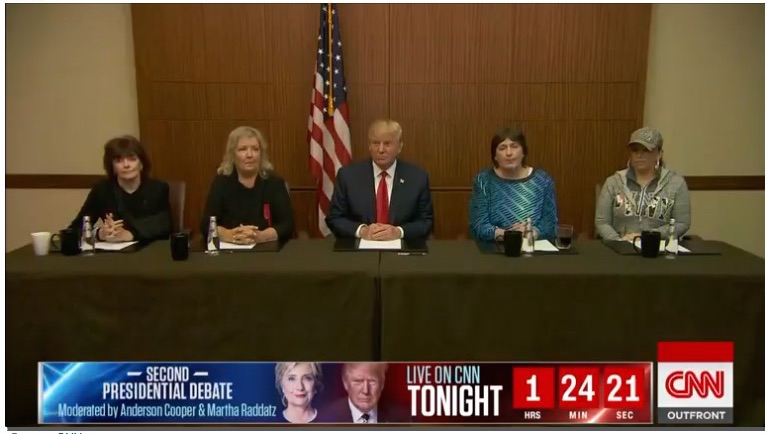
Donald Trump pre-debate press conference, St. Louis, October 9, 2016, CNN, screenshot. From left to right: Kathleen Willey, Juanita Broaddrick, Kathy Shelton, and Paula Jones.
Trump assembled this cast of characters for a press conference that greeted reporters just before the debate began — something he billed as a chance for the press to watch his “debate prep,” clearly his own attempt at an October surprise. Stephen Bannon of the wingnut website Breitbart.com, Trump’s current campaign chief executive, orchestrated this moment, apparently intended to throw Clinton off her game. This scheme didn’t stop there. According to the Washington Post,
Donald Trump’s campaign sought to intimidate Hillary Clinton and embarrass her husband by seating women who have accused former president Bill Clinton of sexual abuse in the Trump family’s box at the presidential debate here Sunday night, according to four people involved in the discussions.
The campaign’s plan, which was closely held and unknown to several of Trump’s top aides, was thwarted just minutes before it could be executed when officials with the Commission on Presidential Debates intervened. …
The gambit to give Bill Clinton’s accusers prime seats was devised by Trump campaign chief executive Stephen K. Bannon and Jared Kushner, the candidate’s son-in-law, and approved personally by Trump.
That Trump would connive in this fashion should surprise no one; he hinted at this strategy during the first debate, and made clear his intention to go this way in the following weeks. And surely, once you strip away the extrapictorial data identifying its subjects, this is an otherwise mundane image. What makes it notable is not what it represents, denotationally, but what it symbolizes.
Trump’s campaign started to lose support from the proverbial “party stalwarts” even before the first debate. By the morning after that event the steady exodus had begun. As the second debate approached, his Republic Party coreligionists made it clear that they considered it a do-or-die moment, in which he needed to demonstrate a better-informed and more nuanced grasp of the issues, an ability to articulate clear policies, and an awareness of his own flaws. They specifically enjoined him from pursuing the line of attack on Bill Clinton’s infidelities, on the grounds that this old news would result in blowback from women voters.
With the release of the Billy Bush video, and Trump’s clearly forced and insincere apology for his role in it, virtually all of his closest advisers — evidently excluding Steve Bannon and son-in-law Jared Kushner — conveyed to him the imperatives of putting aside the attacks on Bill Clinton and displaying genuine, credible contrition about the video. (Small wonder that the most resonant images to emerge from Trump’s “grab them by the pussy” debacle are screenshots from the 2005 tape and of Michelle Obama’s impassioned, outraged October 13 takedown of Trump’s “sexually predatory behavior.”)
So this banal image of five people seated behind a table symbolizes the very essence of Donald Trump — that to fulfill the demands of his own wounded ego he needed to lash out at and humiliate the woman who seemed poised to defeat him, even if it sealed his loss and cost him his last shot at the presidency. Consequently, he did the exact opposite of everything that common sense — and his seasoned campaign advisers — told him not to do: dragged out these tired old charges, boasted, bullied, accused, insulted, threatened, deflected, digressed, ranted, whined, lied.
This picture, then, represents Trump’s total disregard for the opinions of others — even presumably trusted and trustworthy others — and their sound, considered advice. When he loses this election, as he will, he will have no one to blame but himself, no matter whom he scapegoats. He will have done it his way — stubbornly, spectacularly, and all on his lonesome.
And, as ever, he will leave it to others to clear away the wreckage and repair the damage. I’ll leave the last word on this, for the moment at least, to George F. Will: “Donald Trump is the GOP’s chemotherapy.”
•
But spend a few minutes with “The Making of Hillary Clinton & Donald Trump,” an online app that offers timeline comparisons of what Clinton and Trump were doing, year by year, going way back. It’s a random-shuffle deal, and the results are always fascinating and instructive.
And check out “Trump goes Bollywood,” Ben Schreckinger’s report for Politico on The Donald’s appearance at a Hindu charity concert in New Jersey. The Orange One referred to Mumbai by its colonial name (Bombay), declared, “I’m a big fan of Hindu [sic] and I’m a big fan of India,” celebrated his business dealings with India, and promised major partnership with it when elected. Schreckinger’s account concludes, “After Trump’s speech, the Republican nominee was followed on stage by men in glittering blue-and-gold costumes, who held green light sabers and danced to techno music.”
•
(For an index of links to all posts in this series, click here.)
•
 Special offer: If you want me to either continue pursuing a particular subject or give you a break and (for one post) write on a topic — my choice — other than the current main story, make a donation of $50 via the PayPal widget below, indicating your preference in a note accompanying your donation. I’ll credit you as that new post’s sponsor, and link to a website of your choosing. Include a note with your snail-mail address (or email it to me separately) for a free signed copy of my 1995 book Critical Focus!
Special offer: If you want me to either continue pursuing a particular subject or give you a break and (for one post) write on a topic — my choice — other than the current main story, make a donation of $50 via the PayPal widget below, indicating your preference in a note accompanying your donation. I’ll credit you as that new post’s sponsor, and link to a website of your choosing. Include a note with your snail-mail address (or email it to me separately) for a free signed copy of my 1995 book Critical Focus!



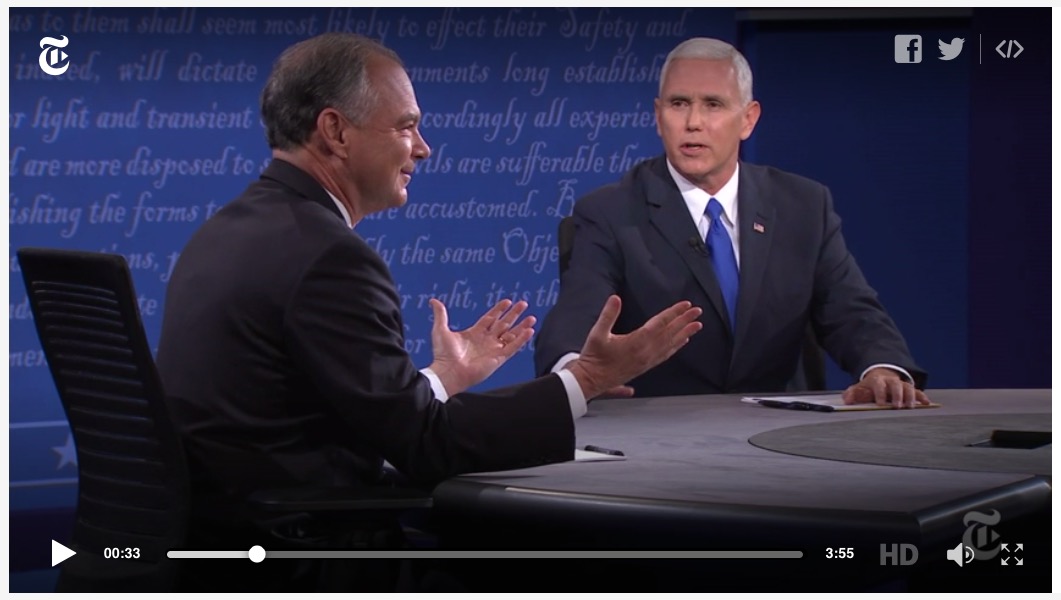


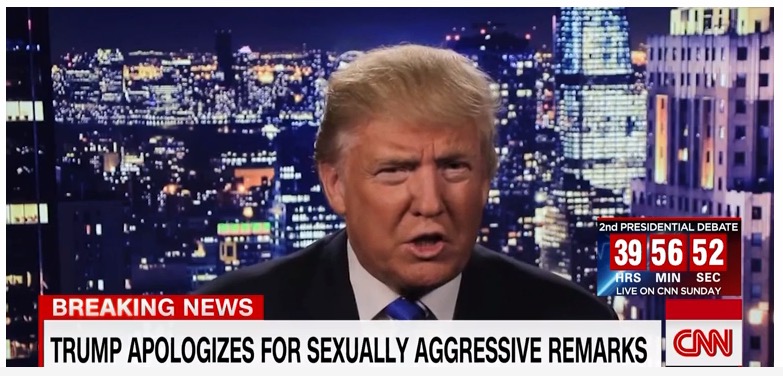
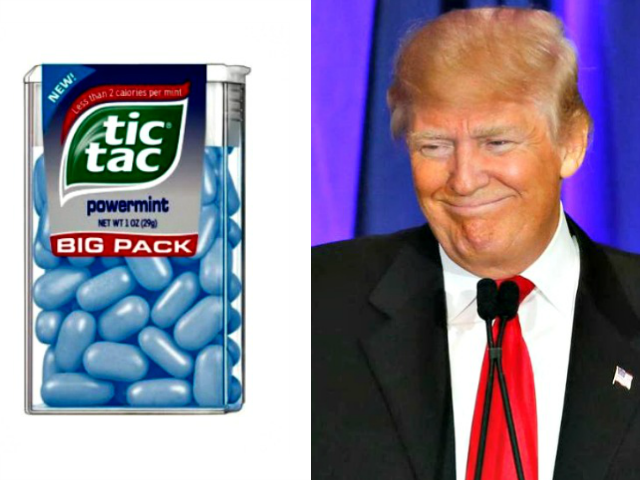

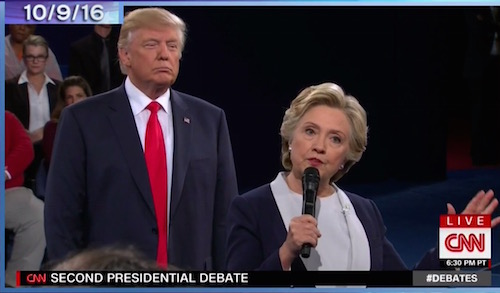

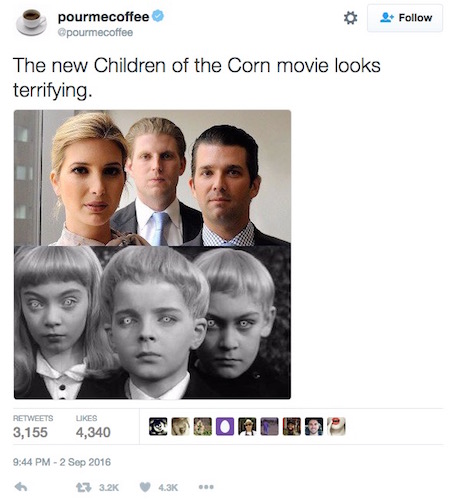
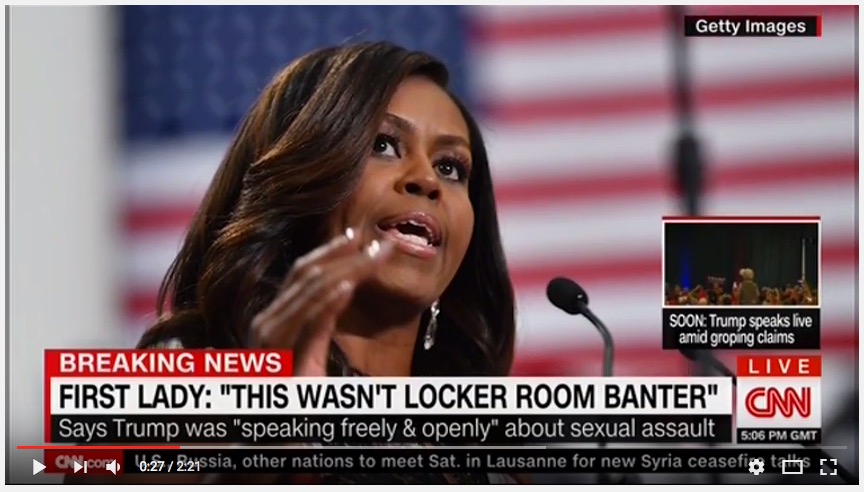




Time is running short. Hil may have the last laugh. If she wins, one of you artists out there draw a piece with Hil giving it to Don with a strap-on.